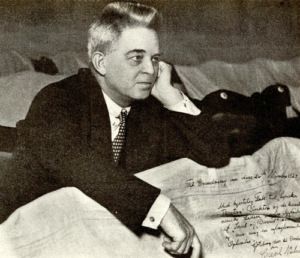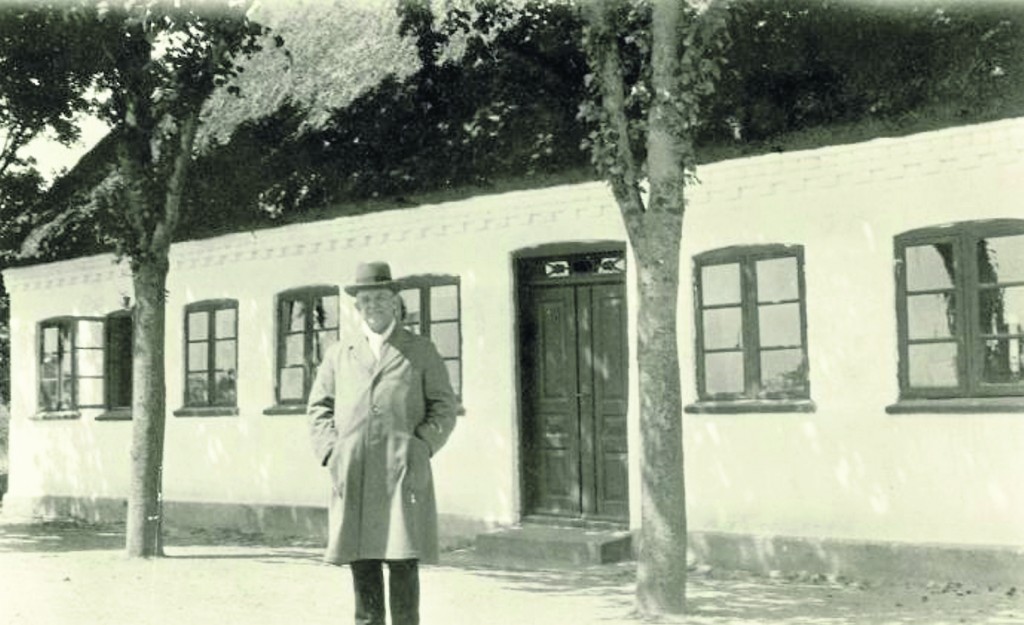Business & Education
The inextinguishable composer whose kudos is ever increasing
This article is more than 9 years old.
Carl Nielsen learnt to play the violin during a childhood bout of measles – his hardship was his nation’s gain

From the time he was handed a violin in his childhood, until his death in 1931, music was always an important part of Carl Nielsen’s life (photo: Charles Carlsson)
On 9 June 1925, when composer Carl Nielsen turned 60, he awoke to find a brass band playing outside his window.
The day was declared a national holiday, and after years of trying to make ends meet playing the violin and composing on the side, he was declared a national hero.
Today his childhood home has been preserved as a museum in the town of Nørre Lyndelse, south of Odense, where the celebrations for his 146th birthday will include free museum entrance and jazz versions of his classic songs.
The event will take place in the museum’s garden with a mass sing-a-long to some of Nielsen’s most famous tunes, with afternoon drinks available.
Taken off the bill
After drifting in and out of popularity for decades, today his work appears to have found a stable place at both backyard parties in Denmark and international concert halls.
As part of the recently completed redesign of the country’s currency, the image of Denmark’s most famous composer has been replaced on the 100 kroner bill by an image of the Old Little Belt Bridge, the former bridge between Funen and Jutland.
However, Nielsen and his work of symphonies, operas, inventive concertos, and over 350 vocal pieces and folk songs are too deeply ingrained in the development of classical music and Danish folk songs to be forgotten.
Better with age
Though his compositions were not standard concert fare in the first half of the 20th century, his reputation has steadily grown in classical circles.
His six symphonies, the Wind Quintet, and the concertos for violin, piano and flute, have gradually entered the classical repertoire for orchestras in Europe and America.
Leonard Bernstein brought back Nielsen’s bold third and fifth symphonies in the mid-1960s with two landmark recordings.
More recently, the young Venezuelan star conductor, Gustavo Dudamel, sung Nielsen’s praises in 2009 after directing the Gothenburg Symphony Orchestra’s rendition of the fourth symphony, with the sub-heading: ‘The Inextinguishable’.
Dudamel said the secret of the symphony is a “simple, little choral that he put there from nowhere”, in the second movement.
“You feel that this harmony, these melodies are from the 17th or 18th century,” he said. “It’s like, to us, like asking please give me more life, not angry, like nostalgic and sad. But at the end comes this part that is the inextinguishable, that is open and the eternity.”
Humble beginnings
Nielsen was born into a poor peasant family in Sortelung, a small town south of Odense, in a farming area without any connection to the name’s literal meaning of ‘black lung’.
He was the seventh child of 12, and his father painted houses for a living and gave his son the traditional countryside last name of ‘Nielsen’, which literally translates as ‘Niel’s son’.
Nielsen Snr ensured that Carl learned to play the violin, which Nielsen tried out while he was lying in bed with the measles, according to his later memoir, ‘Min Fynske Barndom’ (‘My Childhood in Funen’).
The family gradually became so poor that most of them emigrated to the Midwest in the United States, although his parents later returned to Denmark.
Nielsen earned a living alone, playing the signal horn and trombone in a military band, until his talent won him a scholarship to the Royal Conservatory in Copenhagen.
Scandinavian influence
He arrived at the school a decade after the Norwegian composer Edvard Grieg had left and his influence can be felt in some of Nielsen’s earlier, more romantic work.
The two men studied with the same teacher at the Royal Conservatory, Niels Gade, who was the most famous musician of his day.
Though Gade was highly respected as a teacher and a good friend of Robert Schumann’s, his own music was considered to be part of the Romantic nationalist style, and Nielsen avoided that label at any cost.
As a violinist with the Royal Danish Orchestra, Nielsen composed on the side. After winning a travel grant to hear other European music in 1890, Nielsen met and married the Danish sculptor Anne Marie Brodersen in Paris.
Their tumultuous marriage often left him taking care of their three children while she was attending to on-site commissions.
At the premiere of his first symphony, Nielsen played in the second violin section, and it was not until the work was well-received in Berlin that he started earning from his compositions.
With the help of a state grant beginning in 1901, Nielsen was able to spend more time composing. His comic piece ‘Maskarade’, which premiered in 1906, gradually became one of his most popular works and has achieved status unofficially as Denmark’s national opera.
Among Nielsen’s contemporaries in the Nordic countries, only Grieg and the Finnish composer Jean Sibelius are more well-known internationally.
Sibelius’s reputation as a dramatic and inventive composer, using drawn-out melodies layered over shorter ones, overshadowed Nielsen’s work for decades.
In fact the two post-Romantic period composers were both born in 1865 and were inspired by polyphonic styles of the Renaissance to create music with more than one melodic voice.
Ahead of his time
Using more than one melody and integrating each one into the whole composition was a technique Nielsen adapted from works by Bach and Haydn.
He and Sibelius both studied and ultimately rejected Wagner’s operas, ‘Tannhäuser’, ‘Lohengrin’, and ‘Die Walküre’ as too calculated and deliberate.
Wagner used a leitmotif, or in this case a short melody, to bind the harmonies together by repeating one phrase.
Nielsen found the operas too closely attached to the Romantic, and chose to experiment more with the dissonance of Haydn’s work.
Though Nielsen’s constant experimentation and emotional coolness left him with many critics and dampened the popular appeal of his work, his pieces have regularly drawn praise from others impressed by the energy and athleticism of the music.
Critic Steve Schwatz describes Nielsen’s work as ‘the music of bees – a tuning into the energy and hum of the natural world’.
The energy and chaos of dueling percussion and swarming insects is one that Nielsen builds into the inexhaustible and the inextinguishable music of life.











































